CAC CA-25 Winjeel A85-418
Walkaround Gallery
This Winjeel A85-418 walkaround was taken at Moorabbin Air Museum in late 2008. They had just pulled their Winjeel out of storage for a freshen up. Hopefully the wings, engine and tailplane will be re-attached also. I'll keep an eye on this and post some pics if it is re-assembled. In the mean time, these pics give an unusual insight into the structure of the Winjeel.
Of particular interest to modellers will be the intact stencilling, and a hint of an earlier colour on the fin. She appears to be in the original service paint and hasn't been re-done.
The Winjeel, an Australian designed and built aircraft, served the RAAF as a trainer between 1955 and 1975. It replaced both the Tiger Moth ab-initio trainer and the CAC Wacket advanced trainer. Winjeels served further as FAC (Forward Air Control) trainers until 1990! Quite a few Winjeels served in this way. Only four were used at any one time, but the retired trainer airframes were rotated out of storage for the purpose.
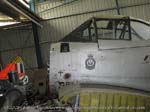 | 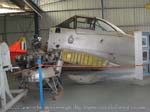 | 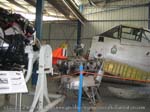 | | Port side nose showing relative position of fuel filler. The badge is No 1 Flying Training School. | Port side front general view. | The Pratt & Whitney R-985 Wasp Junior as used on all prototype and production Winjeels. It was to have the locally designed Cicada 7-cylinder radial, but development was dropped early in the program. |
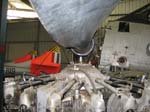 | 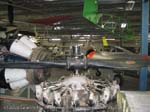 | 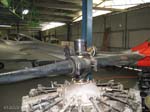 | | Detail of the gearbox at the front of the engine. | Hamilton Standard two blade variable pitch propeller. | Hamilton Standard two blade variable pitch propeller. |
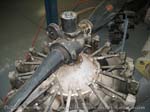 | 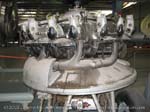 | 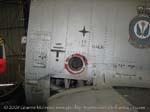 | | View of the front of the Pratt & Whitney engine. | View of the port side of the engine. Note the slight cant of the engine to the left. This gave a thrust line on a slight decline from the fuselage centreline. | Fuel filler and earthing point detail at the port wing root. |
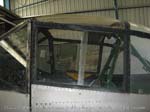 | 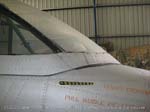 | 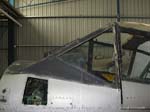 | | Port side of the canopy showing sliding window. | Port rear of the canopy frame showing sealing strip. | Port side of front windscreen. Missing hatch is for rudder tube access. |
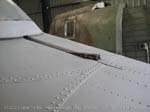 | 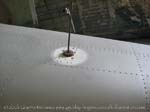 | 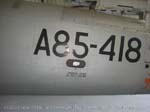 | | Travel rail for sliding canopy. | Aerial on rear deck of fuselage. It is offset slightly to port. | Static vent on rear port fuselage. The leading edge of the tailplane would be almost directly above this. |
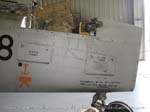 | 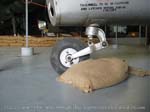 | 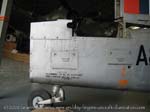 | | Under-tailplane access panels. | Lockable, castoring tailwheel. | Starboard under tailplane. |
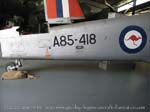 | 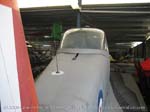 | 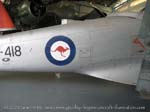 | | Starboard tail. | Rear fuselage deck showing offset of aerial and centred canopy rail. | Starboard rear fuselage showing large wing fillet. |
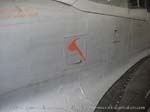 | 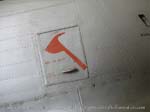 | 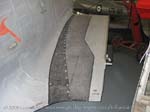 | | Fire-axe hatch under rear of canopy on starboard side. | Fire-axe hatch detail. | Starboard wing root showing walkway pattern. |
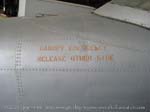 | 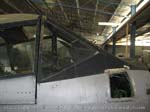 | 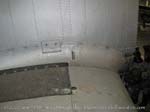 | | Stencilling behind canopy on starboard side. | Starboard side of winscreen. | Starboard wing root. |
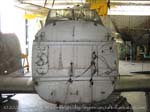 | 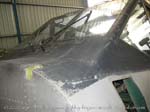 | 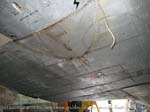 | | Firewall. | Windscreen. | Underside of wing centre section from the front. |
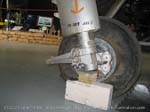 | 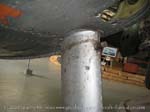 | 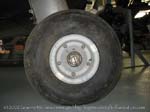 | | Inside of port landing gear. Note depressurised oleo strut. | Top inside of port undercarriage strut. | Outboard side of starboard main wheel. Note creep marks on rim. |
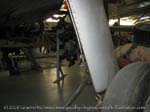 | 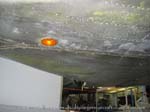 | 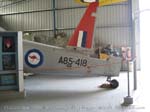 | | Starboard main strut showing brake hydraulic tube and pipe. | Formation light set slightly to starboard under wing trailing edge fairings | Port side of tail. |
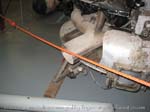 | 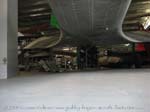 | 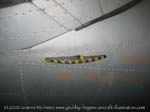 | | The single exhaust outlet. This emerged on the lower starboard side of the engine cowlings. | Looking forward under the tail showing the two wing root fairings. Note that their trailing edges drop below the level of the fuselage underside. | Emergency canopy release behind the canopy on the port side. |
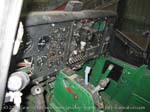 | 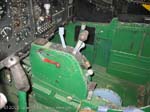 | 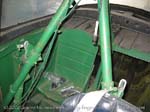 | | Instrument panel from the port side. | Centre console with engine controls. The specification called for engine controls on the left of both pilots. Consequently, a similar binacle appears on the port wall of the cockpit. You can just see the edge of the main throttle handle on the left of the pic. | The Winjeel had a third seat directly behind the starboard pilot. The concept was that you could teach two people at once this way. Apparently it didn't work. |
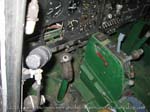 | 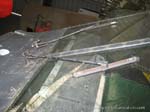 | 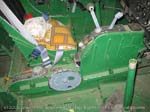 | | Port side of the cockpit. Note that the starboard pilot's seat is not installed. | Windscreen wiper arrangement. | Centre binacle from the starboard side. |
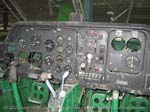 | 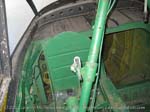 | | Instrument panel. | Looking toward the rear from the starboard side. Note the difference between the interior green colour used in the cockpit area and the yellow/green anti-corrosion coating inside the tail area. |
References:- Tiger Moth, CT-4, Wackett & Winjeel in Australian Service, Stewart Wilson, ISBN 1 875671 16 1
Go to Piston-Prop Walkarounds Page from Winjeel A58-418 Walkaround Page
Go to Grubby Fingers Home from Winjeel A58-418 Walkaround page
|




















































